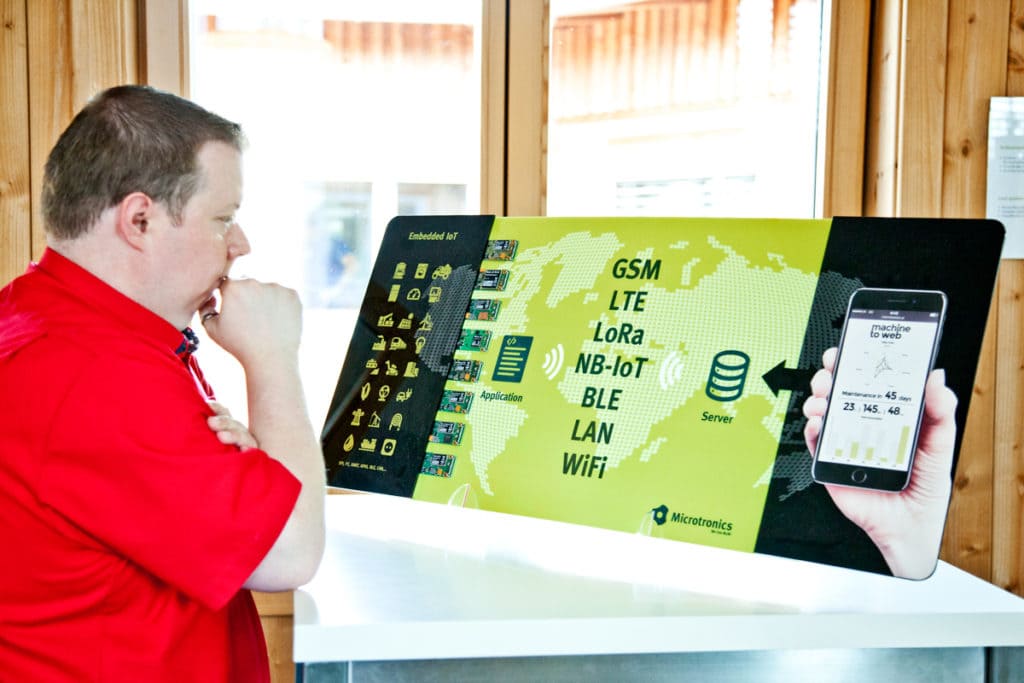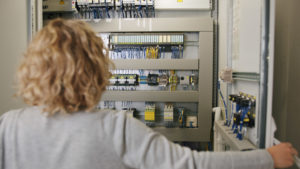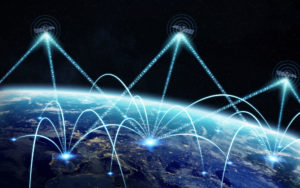One thing can be revealed in advance: None of the technologies is the best.
NB-IoT, LoRa and LTE Cat M1 are mobile radio technologies that are becoming increasingly popular in connection with IoT products. In this article, we take a look at the three technologies, their commonalities, differences and the areas of application for which they are predestined.
What do the technologies have in common and for which applications are they particularly suitable?
All three technologies belong to the category of Low Power Wide Area Networks (LPWAN). As the name suggests, these are energy-efficient radio transmission technologies. This is why NB-IoT, LoRa and LTE Cat M1 are very suitable for battery-powered IoT products and sensors. Up to 10 years of service life are achieved maintenance-free, depending on the operating mode.
A major advantage associated with the low carrier frequency and the transmission and modulation methods is the high penetration. It is possible to transmit data through thick walls from basements, underground car parks or a sewer.
In free field, i.e. where there are no obstacles in the way of the radio signal, the range is even several kilometres. Compared to short-range radio, WiFi, RFID or ZigBee, the range of NB-IoT, LoRa and LTE-Cat M1 is therefore very high.
One limitation of all three technologies is the small amount of data that can be transferred. This is where NB-IoT and LoRa differ from LTE Cat M1. With NB-IoT and LoRa, the data is transmitted in the form of so-called messages. With LTE Cat M1, on the other hand, the throughput is several Mbit/s, i.e. around 25 times as much. LTE Cat M1 also offers low latency, voice telephony (VoLTE) and mechanisms to guarantee the transmission of data (high quality of service). From an application perspective, LTE Cat M1 can be compared with 2G.
Typical applications for LoRa and NB-IoT are smart meters, fleet management or wearables – i.e. applications from the “massive” IoT sector. These are non-critical applications with small amounts of data. Any failures or lost data records are of less relevance here.
In contrast, LTE Cat M1 is used specifically in the “critical” IoT area. For example, in road safety, traffic monitoring and aviation – wherever an online connection is required. Secure, reliable transmission must be guaranteed for these applications.
What differences are there with regard to the required infrastructure?
LTE Cat M1 and NB-IoT are an extension of the LTE network and are already anchored in the 5G standard. The technologies operate on a carrier frequency of 800 MHz in the licensed range and are subject to the 3GPP mobile communications standard. One of the advantages of NB-IoT and LTE Cat M1 is that the technologies are available through an update of the existing mobile networks. This means that you do not need your own infrastructure.
LoRa is operated on the 868 MHz frequency in the licence-free band and is therefore very cost-effective. The necessary infrastructure, including the base stations of the LoRa application servers etc., can even be installed privately as a stand-alone solution. This guarantees long-term availability. However, as in many countries, there are also public LoRa networks that can be used. In Austria, for example, the company SENS operates a LoRa network;
LoRa is subject to the standard of the LoRa Alliance. Thanks to standardisation, any LoRa sensors/products already available on the market are compatible with the network infrastructure.

Which technology is the best technology?
As already revealed at the beginning, none of the three technologies can be rated as better or worse. Rather, the question must be “Which technology can I use to best realise my IoT product or use case?”. Because only if the technology fulfils the requirements of the product will the end result be a product that delivers added value for the market or the customer. The foundations for the success of the product are therefore laid at the conceptualisation stage. The Microtronics DigiTeam asks the right questions in order to select the right technology together with the customer.
Exemplary questions on the selection of the optimum transmission technology
- In which countries and regions is the product used?
- Is it a mobile or stationary product?
- Which data must be transferred from the product and how often?
- How long is the intended service life of the product?
- Who puts the product into operation and what does the installation process look like?
In two highly simplified examples you can see which considerations and arguments could lead to the choice of the respective transmission technologies.
Example 1: Field camera
Question 1: In which countries and regions is the product used?
The field camera is sold on the international market. During production, the manufacturer does not yet know exactly which country the field camera will be sold to and where it will be operated.
Question 2: Is it a mobile or stationary product?
The product is permanently installed at the measuring point. With relatively little effort, the camera can be mounted and operated in a different location or field. For example, a field camera can first be mounted on a strawberry field and then monitor pumpkins in another field after the season.
Question 3: What data needs to be transferred from the product and how often so that it delivers real added value for the customer and the business model works?
The field camera records climatic data (temperature, humidity, precipitation) on an hourly basis. A picture is taken once a day. The image is transmitted to the server together with the climate data on a daily basis.

The answers to these three questions lead to the choice of LTE Cat M1 as the transmission technology. LTE Cat M1 offers roaming, i.e. the use of the technology across national borders. Larger amounts of data, such as images, can also be transferred.
Example 2: Asset tracking on company premises
Question 1: In which countries and regions is the product used?
The product is used exclusively on the company’s own premises in the Waldviertel. The cloud is operated in our own IT centre.
Question 2: What data needs to be transferred from the product and how often so that it delivers real added value for the customer and the business model works?
The position of the product on the company premises should be transmitted regularly. When leaving a defined area, a message should also be sent to the server.

LoRa can be set up as a private infrastructure and operated by the customer himself. In this case, a private network of this kind is a good option. Alternatively, NB-IoT could also be used if network coverage is available in this area.
1,2 or 3 – Which technology is right for you?
Would you like to realise an Internet of Things application with LPWAN technologies? Do you need support in choosing the right technology?
Visit Microtronics for a free, virtual IoT Coffee! Tell us about your idea! Together we will find out how you can utilise innovative technologies to make your application a reality with added value.


